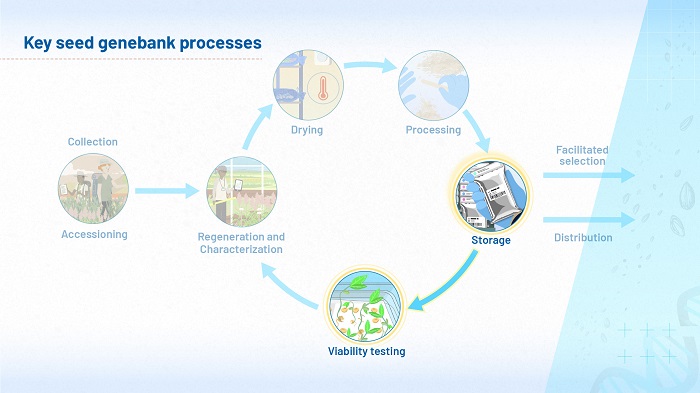Overview of genebank processes

Figure 1 (above) highlights the two processes, storage and viability testing, that we will be considering most in module 2. They are set within our process model of the ex situ conservation of seeds in genebanks.
The cycle, which you first saw in module 1, is sometimes described as ‘steady state operations’. Enough seed is regenerated, dried and characterized to ensure that the amount of plant genetic resources for food and agriculture (PGRFA) in storage will serve the needs of users. In module 1, you learned that seeds age during the time they spend in storage, so in order to maintain steady state operations, it will eventually be necessary to regenerate. Viability testing is carried out regularly, to ensure that sufficient PGRFA is regenerated, and the cycle starts again.
In this module, you will discover some of the factors that can influence seed aging during storage and some of the mechanisms involved. How well seeds are dried and sorted before they go into storage can also make a difference to their viability when they come out of storage. Viability testing is therefore crucial to a genebank’s success. While some of the influences on seed longevity may be beyond your control, the data yielded by regular viability testing will ensure that your stock is regenerated in a timely way.
Introduction
